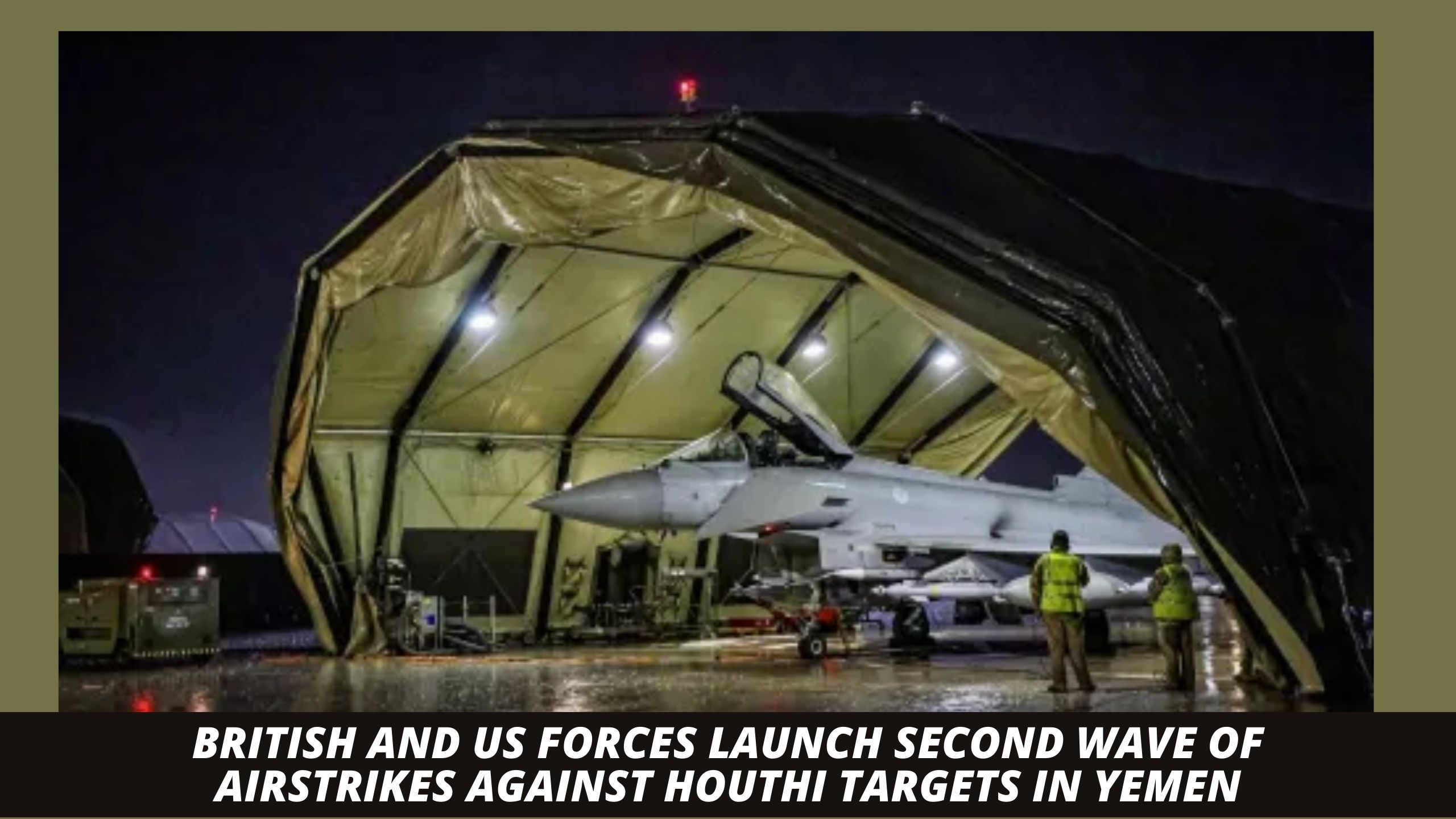British and US troops worked together to launch a second round of airstrikes against Houthi missile sites in Yemen. The goal was to disrupt and weaken the group’s abilities after they continued to attack civilian and military ships in the Red Sea.

British and US Forces Launch Second Wave of Airstrikes Against Houthi Targets in Yemen (Photo: Google)
Joint Airstrikes: The coordinated airstrikes, involving a combination of warship and submarine-launched Tomahawk missiles as well as fighter jets, targeted crucial Houthi missile storage sites and launchers. US defense officials, speaking anonymously, revealed that the strikes were part of a series of proportionate and necessary responses directed at eight specific Houthi targets in Yemen.
The joint operation, which had the support of allies like Australia, Bahrain, Canada, and the Netherlands, concentrated specifically on impeding the Houthis’ ability to threaten international trade and put innocent mariners’ lives in danger.
Reflecting on the situation’s urgency, the Ministry of Defence affirmed the deployment of four Typhoon fighter jets supported by Voyager refueling tankers in the airstrikes, underscoring the significant collaboration between the UK and US forces.
READ ALSO: US Launches Seventh Preemptive Strike Against Houthi Missiles In Red Sea And Gulf Of Aden
Diplomatic Efforts: During a recent phone call, Prime Minister Rishi Sunak and US President Joe Biden discussed ongoing efforts to deter and disrupt Houthi attacks on commercial and military vessels, while also addressing the importance of securing the release of hostages held by Hamas in Gaza.
The dialogue between the two leaders highlighted the commitment to freedom of navigation, international commerce, and defending mariners from illegal and unjustifiable attacks.
Furthermore, the statement released by Defense Secretary Grant Shapps emphasized the necessity of the airstrikes as a self-defensive measure to safeguard the lives of sailors and protect the vital shipping route from continued Houthi threats.




![Tyson Foods Plant [Photo: Food Manufacturing]](https://southarkansassun.com/wp-content/uploads/2023/08/iStock_1185520857__1_.5e441daa51cca-600x337.jpg)







![Silverado Senior Living Management Inc. [Photo: Los Angeles Times]](https://southarkansassun.com/wp-content/uploads/2023/10/download-6-4-600x337.jpg)

![China's Wuhan Institute of Virology [Photo: Nature]](https://southarkansassun.com/wp-content/uploads/2023/09/d41586-021-01529-3_19239608-600x337.jpg)
















